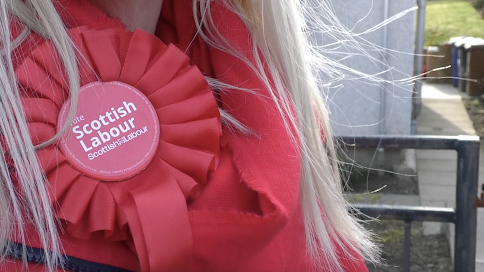Rutherglen and Hamilton West: what did we learn?
In the run-up to election day, various media outlets were suggesting that a Labour victory would be "seismic". After the result was declared, Anas Sarwar called the outcome "seismic", while Keir Starmer reflected that the result was "seismic". The absence of other superlatives underlines an obvious lack of imagination, but is all the excitement justified?
No... and yes.
A Labour win in Rutherglen and Hamilton West is hardly a “seismic” result for Scottish politics. This is a constituency that has only been held by the SNP between 2015 and 2017, and then from 2019 until Margaret Ferrier's suspension a year later. Its predecessor constituencies of Rutherglen and Hamilton/Hamilton South were solidly Labour for decades; the former had never returned an SNP while Hamilton was famously the scene of a remarkable SNP by-election victory in 1967. Labour took the seat back from Winnie Ewing at the 1970 General Election with an 8,582 majority.
Rutherglen and Hamilton West is, historically speaking, solid Labour territory. It was one of only seven constituencies Labour won in the 2017 General Election. Given this, and the backdrop of Margaret Ferrier's inexcusable indiscretions against which the by-election inevitably played out, this was Labout's election to lose. There's nothing seismic about Labour winning in a constituency that has been Labour-dominated since the First World War*, especially when its campaign was so well-funded and with 40 Labour MPs travelling to the constituency during the campaign.
It's worth pointing out that Rutherglen and Hamilton West had the fifth highest level of Labour support in Scotland; by contrast, it was 36th on the SNP's list. Before the result was confirmed, various politicos and media types were already discussing the wider political ramifications. For me, in taking any lessons from the outcome, the key factors would be turnout and the size of the majority. A Labour win, in and of itself, would be pretty inconsequential.
Turnout was low - dreadfully low - at 37.19%. Can we therefore deduce anything from this result? I think we have to be careful when interpreting results against low turnout, but it is perhaps fair to draw comparisons with the 2021 Airdrie and Shotts by-election in which the SNP successfully held off a Labour challenge. This was another central belt seat, which historically had been strongly Labour, and turnout was even lower at 34.3%. Clearly something has changed in the intervening two years.
It a dangerous thing to project by-election results onto national forecasts but, if this performance is repeated at a national election, Labour would be once again the largest party in Scotland. That would be quite a turnaround, but is there any evidence beyond this result to suggest that is likely? At the moment, not really. Before looking like a likely government-in-waiting, Labour firstly has to look like a competent opposition and a force in its former heartlands. This by-election is one significant step on the road to doing that, but it is not in itself evidence that Labour is set to return to its pre-2011 dominant position.
What this result will do is help Labour re-establish itself as a threat in the central belt seats. Labour didn't just need to win in Rutherglen and Hamilton West but to win well. A small majority would have felt like an SNP moral victory. They wanted a result that said "we're back". Labour needed to show convincingly that it can win back voters in places it once took for granted. - and that they have done. Is it a "seismic" result? Probably not, but it does send out some very clear messages.
In years to come commentators may view this result as a significant milestone in the rebirth of Scottish Labour and a return to "normalcy". Similarly, they may also see it as yet another by-election that proved to be a poor indicator of future political events.
The SNP were never confident of winning here - not only because of the Margaret Ferrier issue - and parties lacking in confidence don't win by-elections. That this is a terrible result for the SNP cannot be disputed, but those writing the party off are, to my mind, premature. The SNP is embroiled in its own internal problems at present, which may or may not be resolved by the time the country goes to a national election. There's a lot that will inevitably be played out in the coming weeks and months, which cannot be pre-empted.
Generalising from by-election results is always a dangerous pastime. What is certain is that, while it's a bit early to be pointing to a Labour revival, Scottish Labour is definitely in recovery. A by-election result like this in which they exceeded even their own expectations will only boost their confidence and have the SNP looking nervously at dozens of other constituencies across central Scotland.
* Hamilton was solidly Labour from 1918 onwards, barring 1967-70, while Rutherglen had a Liberal MP from 1918-22 and two spells during which it returned Conservative members (1931-45 and 1951-64).

Comments